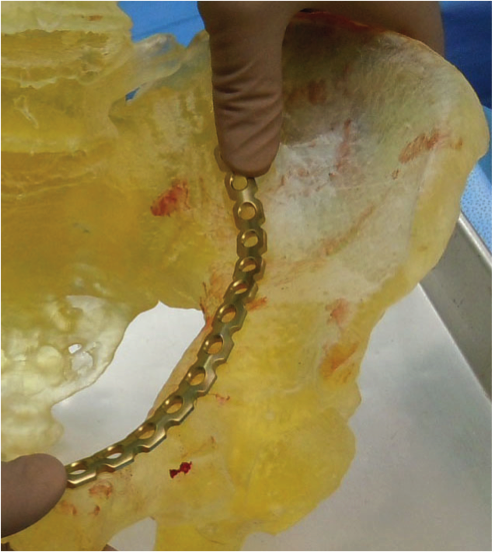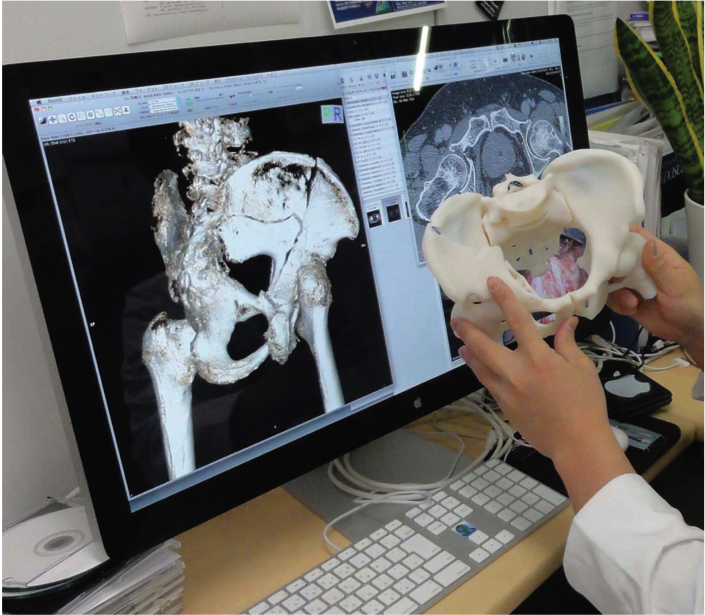Overview of 3D printing in medicine
Within the past few years, interest in 3D printing and its medical applications has been growing exponentially. 3D printed models have already been used to provide unparalleled pre-surgical planning in complex surgeries such as conjoined twin separation and face transplantation, as well as more common procedures such as fracture fixations and joint replacements. However, the majority of health care providers and recipients are still unaware of this technology and its utility. My hope with this blog is to provide a basic overview of 3D printing and its applications in medicine by answering some of the frequently raised questions. Stay tuned for future blogs where I will attempt to address specific topics in detail!
What is 3D printing?
3D printing is a process of creating 3 dimensional objects from a digital file by using a 3D printer. In the field of medicine, the digital files are comprised of 2 dimensional CT or MR images. 3D printers do not directly recognize these digital files and post processing steps are required to convert these files into a format that is readable by 3D printers. The printer then deposits various materials layer by layer to build a 3 dimensional object.
What are the applications of 3D printing in medicine?
3D models have already been used for presurgical planning in numerous subspecialties including maxillofacial and craniofacial surgery, orthopedic surgery, neurosurgery, cardiovascular surgery, pediatrics and dentistry. Models can also been used to design implants and prosthesis that are customized to each patient. In the field of radiation oncology, 3D models can be used for radiotherapy planning of optimal positioning of radiation beam and creation of personally designed radiation shields. 3D models are also proving to be superb educational tools for teaching anatomy, pathology and surgical techniques. Bioprinting, which involves printing of live cells and viable tissues that can potentially be implanted into human beings is currently an active filed of research.
What are the benefits of 3D printed models that have already been reported?
Currently, 3D printed models are predominantly utilized by surgeons. Preoperatively these models improve diagnosis and evaluation of the complexity of the procedure thereby allowing selection of optimal, patient-specific treatment strategy. The models can be used to plan every step of a complex procedure including surgical point of entry, incision size, precise screw length and trajectory. The models can also serve as a cutting guide for resection and as a template for preoperative bending of reconstruction hardware that would fit the specific patient anatomy perfectly. As a result of this accurate preoperative simulation and preparation, 3D models result in reduced actual operating time and cost associated with the use of surgical rooms. The time that the patient has to remain under general anesthesia, amount of blood loss and other potential complications are subsequently minimized. Shortened hospital stay and decreased need for follow up procedures have also been reported. 3D printed models allow patients who typically don’t have years of medical training, to visualize and better understand the planned procedure and make it easier for surgeons to obtain informed consents from their patients.
What is the purpose of printing models if 3D images can be viewed on a computer screen?
Although a 3 dimensional volume rendered digital models can be created, these digital models are still viewed on a 2 dimensional computer screen, which does not provide the same sensory input as holding a physical model in hand. Surgeons that have used the models report the additional tactile sensory input gained by holding the models and the ability to rotate and view the models from any direction in space greatly enhances their spatial perception of anatomic relationships between adjacent structures. Additionally the models provide the added benefits mentioned above such as serving as a cutting guide and template for pre-surgical bending of reconstruction plates, which cannot be achieved unless these models are printed into tangible objects.
In summary, it is hard to imagine all the ways this technology will impact patient care, but judging from what has already been achieved within a very short period of time, 3D printing will certainly revolutionize the healthcare industry for the better.
Leave a comment or question below regarding topics you would like addressed on the next blog!
Tatiana Kelil, MD
Image credit: Healio.com/orthopedics; John Robert Honiball (University of Stellenbosch).








3 Comments
Recommended Comments
Create an account or sign in to comment
You need to be a member in order to leave a comment
Create an account
Sign up for a new account in our community. It's easy!
Register a new accountSign in
Already have an account? Sign in here.
Sign In Now